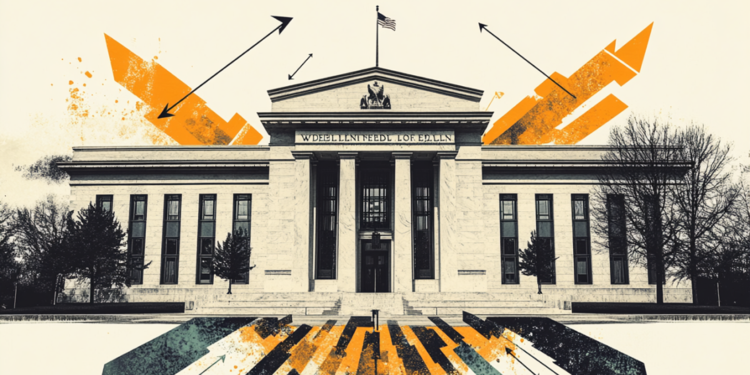In its Monetary Policy Report to Congress, published on Friday, the Federal Reserve said that inflation is somewhat elevated, while the job market remains in a solid shape, per Reuters.
Key takeaways
“Some early signs tariffs pushing up inflation.”
“Still early to assess tariff impact on economy.”
“Tariff impact yet to show up in official data.”
“Financial stability resilient amid heightened uncertainty.”
“Broad-based decline in Dollar foreign exchange value.”
“Tariffs have weighed on household, business sentiment.”
“Slow start to 2025 tied to tariff related adjustments.”
“In early April, treasury market functioning remained orderly, but liquidity fell to levels last seen in early 2023.”
“Liquidity also materially deteriorated in equity, corporate bond, and municipal bond markets.”
“Liquidity across markets has improved since, but conditions remain responsive to news about trade policy.”
Market reaction
The US Dollar Index edged lower from session highs following this publication and was last seen losing 0.1% on the day at 98.70.
Fed FAQs
Monetary policy in the US is shaped by the Federal Reserve (Fed). The Fed has two mandates: to achieve price stability and foster full employment. Its primary tool to achieve these goals is by adjusting interest rates.
When prices are rising too quickly and inflation is above the Fed’s 2% target, it raises interest rates, increasing borrowing costs throughout the economy. This results in a stronger US Dollar (USD) as it makes the US a more attractive place for international investors to park their money.
When inflation falls below 2% or the Unemployment Rate is too high, the Fed may lower interest rates to encourage borrowing, which weighs on the Greenback.
The Federal Reserve (Fed) holds eight policy meetings a year, where the Federal Open Market Committee (FOMC) assesses economic conditions and makes monetary policy decisions.
The FOMC is attended by twelve Fed officials – the seven members of the Board of Governors, the president of the Federal Reserve Bank of New York, and four of the remaining eleven regional Reserve Bank presidents, who serve one-year terms on a rotating basis.
In extreme situations, the Federal Reserve may resort to a policy named Quantitative Easing (QE). QE is the process by which the Fed substantially increases the flow of credit in a stuck financial system.
It is a non-standard policy measure used during crises or when inflation is extremely low. It was the Fed’s weapon of choice during the Great Financial Crisis in 2008. It involves the Fed printing more Dollars and using them to buy high grade bonds from financial institutions. QE usually weakens the US Dollar.
Quantitative tightening (QT) is the reverse process of QE, whereby the Federal Reserve stops buying bonds from financial institutions and does not reinvest the principal from the bonds it holds maturing, to purchase new bonds. It is usually positive for the value of the US Dollar.

